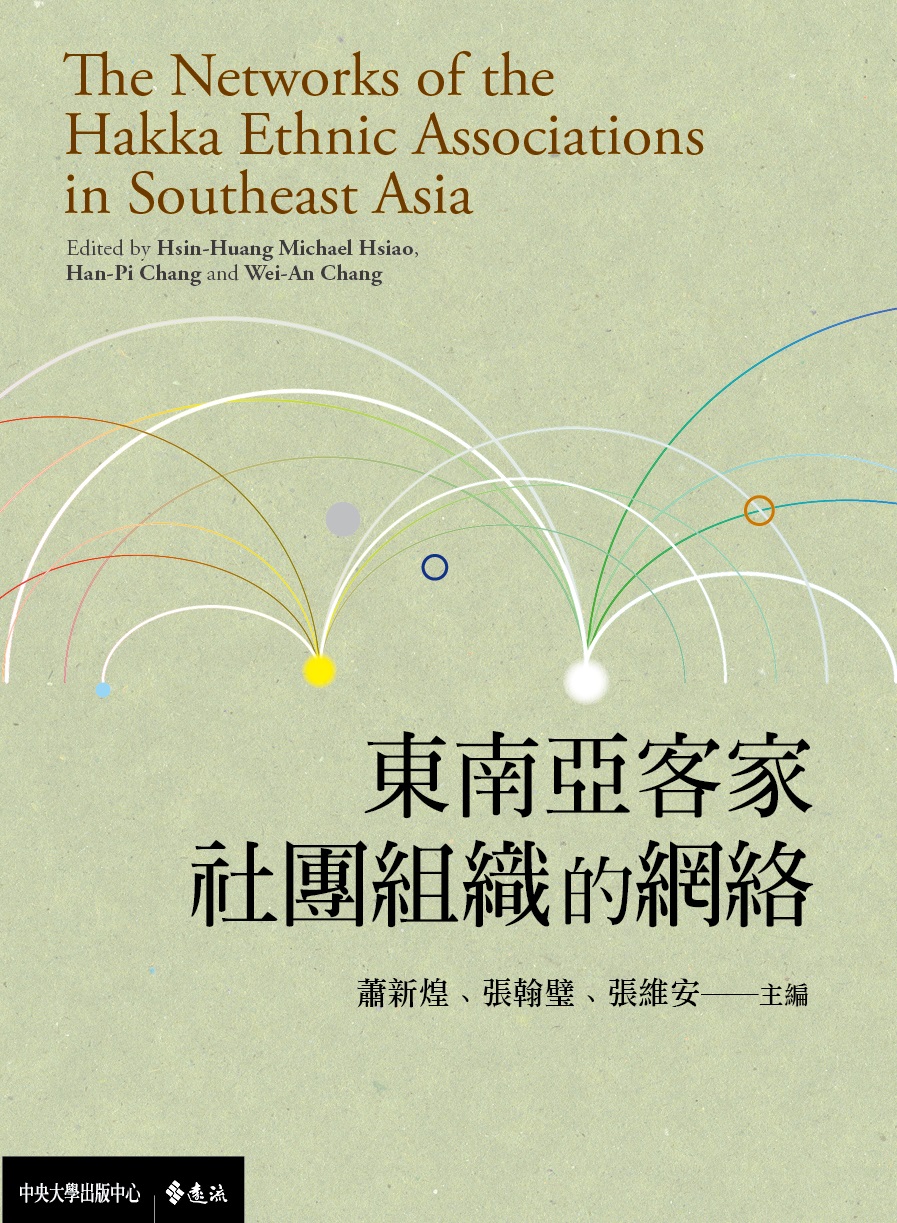東南亞客家社團組織的網絡(The Networks of the Hakka Ethnic Associations in Southeast Asia)
東南亞客家社團組織的網絡(The Networks of the Hakka Ethnic Associations in Southeast Asia)
客家族群有一個明顯的特色:分散全球但又頻繁聯繫互動。因此,將亞洲、甚至全球客家作為一個集體,分析客家族群的散布、聯繫及相互隸屬力量,應具有認識論上的價值和政策意涵。
本書運用社會網絡分析法,以東南亞各國為研究區域,同時蒐集「老華客會館」和「新臺客社團」的資料,進行各類客家社團組織之間的網絡比較對照探討,以期瞭解當代客家社團組織的整體和多元發展脈絡。為補充過往以單一國家空間為單位的研究特色,本書以整個東南亞的客家社團組織作為範圍,研究其互動和網絡,並探究各地客家社團的結構、功能和彼此的組織網絡。此外,本書也希望藉此建構臺灣作為世界客家研究中心的基地,以及成為全球客家社團連結和網絡的平台。
Among the research on the overseas Chinese associations, the study of the Hakka ethnic associations has always been important. From traditional regional organizations in the 18th century to the Hakka federations in the 20th century, they have gradually helped develop “Hakka consciousness” in Southeast Asia. In recent years, new Hakka associations founded in Southeast Asia are associated with the Hakka from Taiwan. Taiwanese overseas Hakka organizations based on the Taiwanese businessmen organizations has become a new element of the overall Hakka ethnic organizations in Southeast Asia in recent decades.
Since the Hakka immigrants from Taiwan or the Hakka businessmen in Southeast Asia actively founded the new Taiwanese Hakka associations, this book explores Southeast Asian Hakka organizations in dividing them into the “old Chinese Hakka” type and the “new Taiwanese Hakka” type, and compare them systematically in order to discover the difference and similarity.
There are numerous studies on the Hakka associations, organizations and groups. In the past, these studies were mostly the detailed qualitative data compilation and description analysis on specific organizations, including the analysis on historical background, constitutions and current developments. They tended to neglect the inter-relations among the organizations over the years.
In order to thoroughly understand the overall inter-organizations relations and their trends among the Hakka organizations, it is necessary to adopt Social Network Analysis (SNA). In comparison to historical research, SNA focuses on social relations and linkages of the organizations. In contrast with research on specific associations, SNA manages cross-organizational analysis; and in comparing with other qualitative research, SNA can probe into social network relations of the organizations quantitatively. Thus, by SNA, this book collects organizational data of cross-national Hakka Associations, old Chinese Hakka associations, and new Taiwanese Hakka associations to conduct cross sectional study on the Hakka organizations so as to explore the overall development of contemporary Southeast Asian Hakka ethnic organizations.
There are three major analytical dimensions. First, it is the internal analysis of social network, focusing on the range as well as the network relations between the organizations. Secondly, it is the external analysis of social network of Hakka ethnic organizations and stressing on external nodes connected by the Hakka organizations. Finally, the Structural Hole Analysis finds the numbers of critical structural holes possessed by the Hakka ethnic organizations which serve as critical channels of relations among the organizations and it will show the roles of the crucial organizations in the relations of overall network.
The book then identifies the most well-connected Hakka ethnic associations. In the end, the book also proposes several practical and policy implications for the future development of the Hakka ethnic links between Taiwan and Southeast Asia.
本書運用社會網絡分析法,以東南亞各國為研究區域,同時蒐集「老華客會館」和「新臺客社團」的資料,進行各類客家社團組織之間的網絡比較對照探討,以期瞭解當代客家社團組織的整體和多元發展脈絡。為補充過往以單一國家空間為單位的研究特色,本書以整個東南亞的客家社團組織作為範圍,研究其互動和網絡,並探究各地客家社團的結構、功能和彼此的組織網絡。此外,本書也希望藉此建構臺灣作為世界客家研究中心的基地,以及成為全球客家社團連結和網絡的平台。
Among the research on the overseas Chinese associations, the study of the Hakka ethnic associations has always been important. From traditional regional organizations in the 18th century to the Hakka federations in the 20th century, they have gradually helped develop “Hakka consciousness” in Southeast Asia. In recent years, new Hakka associations founded in Southeast Asia are associated with the Hakka from Taiwan. Taiwanese overseas Hakka organizations based on the Taiwanese businessmen organizations has become a new element of the overall Hakka ethnic organizations in Southeast Asia in recent decades.
Since the Hakka immigrants from Taiwan or the Hakka businessmen in Southeast Asia actively founded the new Taiwanese Hakka associations, this book explores Southeast Asian Hakka organizations in dividing them into the “old Chinese Hakka” type and the “new Taiwanese Hakka” type, and compare them systematically in order to discover the difference and similarity.
There are numerous studies on the Hakka associations, organizations and groups. In the past, these studies were mostly the detailed qualitative data compilation and description analysis on specific organizations, including the analysis on historical background, constitutions and current developments. They tended to neglect the inter-relations among the organizations over the years.
In order to thoroughly understand the overall inter-organizations relations and their trends among the Hakka organizations, it is necessary to adopt Social Network Analysis (SNA). In comparison to historical research, SNA focuses on social relations and linkages of the organizations. In contrast with research on specific associations, SNA manages cross-organizational analysis; and in comparing with other qualitative research, SNA can probe into social network relations of the organizations quantitatively. Thus, by SNA, this book collects organizational data of cross-national Hakka Associations, old Chinese Hakka associations, and new Taiwanese Hakka associations to conduct cross sectional study on the Hakka organizations so as to explore the overall development of contemporary Southeast Asian Hakka ethnic organizations.
There are three major analytical dimensions. First, it is the internal analysis of social network, focusing on the range as well as the network relations between the organizations. Secondly, it is the external analysis of social network of Hakka ethnic organizations and stressing on external nodes connected by the Hakka organizations. Finally, the Structural Hole Analysis finds the numbers of critical structural holes possessed by the Hakka ethnic organizations which serve as critical channels of relations among the organizations and it will show the roles of the crucial organizations in the relations of overall network.
The book then identifies the most well-connected Hakka ethnic associations. In the end, the book also proposes several practical and policy implications for the future development of the Hakka ethnic links between Taiwan and Southeast Asia.

出版商
中大出版中心,遠流(NCU Press,Yuan-Liou Publishing)
ISBN
9789865659295
出版年份
2020
專業範疇
社會科學
主題
社會
地區
環球亞洲(亞洲與世界其他地區)